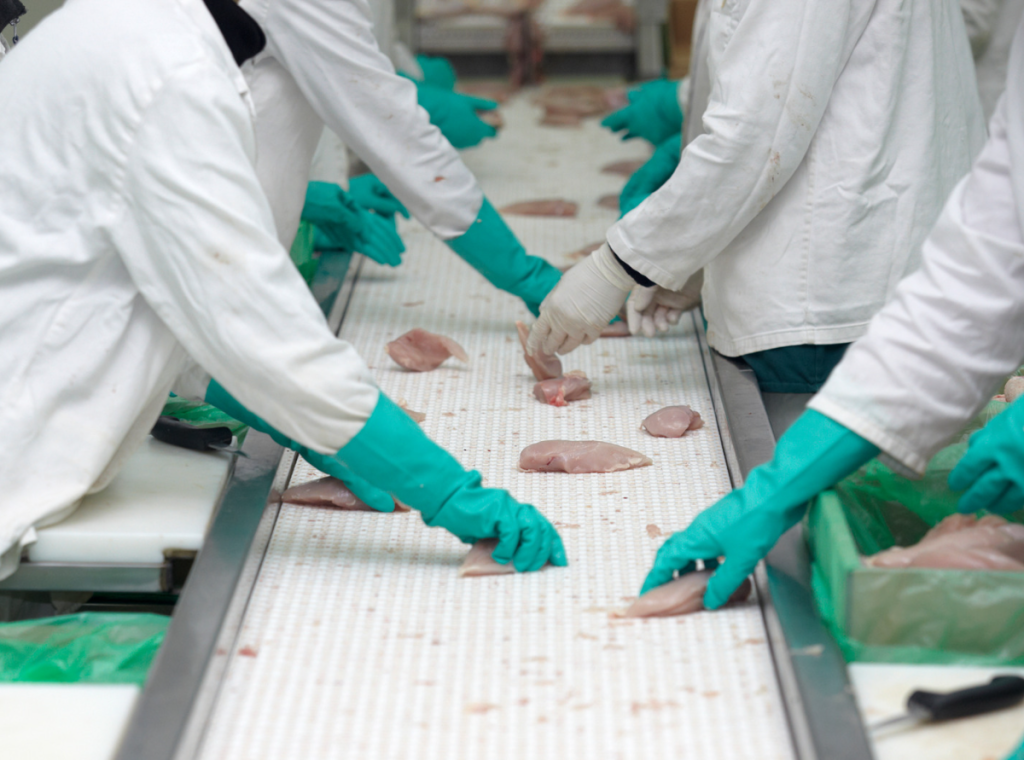|
Escuchar artículo
Getting your Trinity Audio player ready...
|
Effectiveness, efficiency and effectiveness are key concepts in maintenance management, and are applied in the three main types of maintenance: preventive, corrective and predictive.
Effectiveness refers to the ability of maintenance to achieve its stated objectives. That is, is it doing what it is supposed to do? In preventive maintenance, effectiveness is measured by the percentage of failures avoided, i.e., the percentage of times preventive maintenance has prevented an equipment failure. In corrective maintenance, effectiveness is measured by equipment downtime. In predictive maintenance, effectiveness is measured by diagnostic accuracy and anticipation of failure.
Efficiency refers to the relationship between the resources used and the results obtained. That is, are you using resources effectively to get the best possible results? In preventive maintenance, efficiency is measured by the cost of preventive maintenance per unit of time or output.

In corrective maintenance, efficiency is measured by the cost of equipment downtime per unit of time or production. In predictive maintenance, efficiency is measured by the cost of diagnostics and repairs per unit of time or production.
Effectiveness refers to the ability to achieve the stated objectives with the least amount of resources possible. That is, are you getting the best possible results with the fewest possible resources? In preventive maintenance, effectiveness is measured by the total cost of preventive maintenance per unit of time or output, including the cost of resources used. In corrective maintenance, effectiveness is measured by the total cost of equipment downtime per unit of time or production, including the cost of resources used. In predictive maintenance, effectiveness is measured by the total cost of diagnostics and repairs per unit of time or production, including the cost of resources used.
In summary, effectiveness, efficiency and efficacy in maintenance are measured by the ability to achieve the established objectives, using resources effectively and achieving the best possible results with the least possible amount of resources.
Example of the concepts of effectiveness, efficiency and effectiveness
To illustrate these concepts in an industrial example, consider a production plant that uses a high-speed machine to manufacture a product. In preventive maintenance, effectiveness is measured by the percentage of machine failures avoided, efficiency is measured by the cost of preventive maintenance per unit of time or output, and effectiveness is measured by the total cost of preventive maintenance per unit of time or output. For example, if preventive maintenance avoids 95% of machine failures, the cost of preventive maintenance is $10,000 per month and production is 10,000 units per month, then effectiveness is 95%, efficiency is $1 per unit and effectiveness is $0.95 per unit.
Effectiveness refers to the ability to achieve the desired objectives. In corrective and predictive maintenance, effectiveness is measured by the ability to resolve equipment problems and failures quickly and effectively. An important measure of effectiveness in corrective maintenance is equipment downtime. Therefore, it can be said that effective corrective maintenance is one that minimizes downtime and maximizes production time. In the case of predictive maintenance, effectiveness is measured by the ability to identify and correct problems before they become failures and cause downtime. Therefore, it can be said that effective predictive maintenance is one that minimizes downtime and maximizes equipment availability.
Efficiency refers to the ability to do things effectively and with the least amount of resources possible. In corrective and predictive maintenance, efficiency is measured by the ability to resolve equipment problems and failures using the least amount of time, labor and material resources possible.

Efficiency in corrective and predictive maintenance
An important measure of efficiency in corrective maintenance is equipment repair time. Therefore, it can be said that an efficient corrective maintenance is one that minimizes repair time and minimizes labor and material costs.
In the case of predictive maintenance, efficiency is measured by the ability to identify and correct problems with the least amount of time, labor and material resources possible. Therefore, it can be said that efficient predictive maintenance is one that minimizes costs and maximizes equipment availability.
Efficiency in corrective and predictive maintenance
Efficiency refers to the ability to achieve the desired objectives in an optimal manner. In corrective and predictive maintenance, effectiveness is measured by the ability to resolve equipment problems and failures quickly, with the least amount of resources possible and with optimum quality. An important measure of effectiveness in corrective maintenance is the recurrent failure rate. Therefore, it can be said that effective corrective maintenance is one that minimizes downtime, minimizes costs and ensures optimal quality of repair.
In the case of predictive maintenance, effectiveness is measured by the ability to identify and correct problems with the least amount of time, labor and material resources possible, with optimum quality. Therefore, it can be said that an effective predictive maintenance is one that minimizes costs, maximizes equipment availability and ensures optimum quality in the repair.
Indicators of effectiveness, efficiency and effectiveness in preventive maintenance
In preventive maintenance management, indicators of effectiveness, efficiency and effectiveness can be used to evaluate and improve the quality of maintenance and reduce costs. Some examples of these indicators are presented below:
- Mean time between failures (MTBF): This indicator measures the average time between equipment failures. A higher MTBF indicates that equipment is performing well and that preventive maintenance is being effective.
- Mean time to repair (MTTR): This indicator measures the average time it takes to repair failed equipment. A low MTTR indicates that corrective maintenance is being performed efficiently, which can reduce downtime and improve equipment availability.
- Percentage of unplanned downtime: This indicator measures the percentage of time equipment is down due to unplanned failures. A low percentage of unplanned downtime indicates that preventive maintenance is being effective and corrective maintenance is being performed efficiently.
- Compliance with preventive maintenance program: This indicator measures the percentage of preventive maintenance activities that are performed according to the planned program. A high percentage of compliance indicates that preventive maintenance is being performed effectively and that equipment is being proactively maintained to avoid failures.
- Maintenance cost per unit produced: This indicator measures the total maintenance cost divided by the number of units produced. A low maintenance cost per unit produced indicates that preventive and corrective maintenance is being performed efficiently and effectively, which can reduce production costs.
These are just a few examples of indicators that can be used in preventive maintenance management to evaluate the effectiveness, efficiency and effectiveness of maintenance. It is important to select the most appropriate indicators based on the specific objectives of the organization and the equipment and systems being maintained.
Indicators of effectiveness, efficiency and effectiveness in corrective maintenance
In corrective maintenance management, indicators of effectiveness, efficiency and effectiveness focus on measuring maintenance performance in repairing equipment or systems after a failure has occurred. Examples of indicators in each category are:
- Effectiveness: The effectiveness of corrective maintenance can be measured by the failure repair success rate. If a repair is performed correctly the first time, it is considered successful. The success rate can be measured as the percentage of successful repairs in a given period of time.

- Efficiency: The efficiency of corrective maintenance can be measured in terms of time and cost. One common indicator is the average time it takes to complete a repair, known as downtime. Another indicator is the average cost per repair. These indicators can help identify opportunities for improvement in the repair process.
- Effectiveness: The effectiveness of corrective maintenance can be measured by the frequency of failures. If corrective maintenance is performed frequently on a piece of equipment or system, it may be an indicator that the root cause of the failure is not being identified and resolved. A high failure rate may also indicate the need for a change in maintenance strategy, such as implementing preventive maintenance.
In general, it is important to keep in mind that indicators of effectiveness, efficiency and effectiveness may vary depending on the type of equipment or system and the industry in which it is located. It is important to select appropriate indicators that fit the specific needs and objectives of the organization.
Indicators of effectiveness, efficiency and efficacy in predictive maintenance
In the case of predictive maintenance management, it is recommended to measure the aforementioned indicators and reliability indicators as follows:
- Reliability Index (RI): measures the effectiveness of predictive maintenance by indicating the percentage of time the equipment is available to operate without failure. A high reliability index indicates that the equipment is operating reliably and that predictive maintenance is being effective.
Industrial cases in the application of effectiveness, efficiency and effectiveness
Effective, efficient and efficient maintenance management is critical to the success of any business that depends on the performance of its assets. Here are some examples of industrial cases where these concepts are applied:

Oil and gas industry: In this industry, maintenance management is essential to ensure worker safety and protect the environment. Critical equipment must be in proper working condition to avoid accidents and spills. Efficiency is measured in terms of downtime and associated costs. Therefore, a good indicator of effectiveness is the reduction of unplanned downtime and a good indicator of efficiency is planned maintenance to avoid downtime.
Automotive industry: In this industry, effectiveness is measured in terms of production and on-time delivery of vehicles. Efficiency is measured in terms of machinery downtime and maintenance costs. A good indicator of effectiveness would be the reduction of machinery downtime and a good indicator of efficiency would be the optimization of maintenance processes.


Food industry: In this industry, product quality is essential. Effectiveness is measured in terms of product quality, efficiency is measured in terms of machinery downtime and maintenance costs. A good indicator of effectiveness would be the reduction of product defects and a good indicator of efficiency would be the optimization of maintenance processes to minimize costs.
Aerospace industry: In this industry, safety is paramount. Effectiveness is measured in terms of passenger and crew safety, efficiency is measured in terms of aircraft downtime and maintenance costs. A good indicator of effectiveness would be the reduction of aircraft accidents and a good indicator of efficiency would be the optimization of maintenance tasks aiming to minimize costs.

Effectiveness, efficiency and efficiency in the CMMSHere
Maintenance management in a computerized maintenance management system (CMMS) such as the CMMS here focuses on measuring the effectiveness, efficiency and effectiveness of maintenance operations. The following describes how these concepts can be applied in a CMMS:

- Effectiveness: Effectiveness measures the extent to which maintenance is meeting established objectives. In a CMMS, key performance indicators (KPIs) can be used to measure effectiveness. These KPIs can include machine availability, adherence to maintenance schedules, reduced downtime, increased equipment life, improved reliability, among others. KPI data can be collected and analyzed to identify areas for maintenance improvement.
- Efficiency: Efficiency refers to the utilization of resources to achieve maintenance objectives. In a CMMS, efficiency can be measured by the amount of resources used to perform maintenance, such as labor, downtime, material costs, among others. Efficiency KPIs can include cost per downtime hour, labor utilization, scheduling efficiency, budget compliance, among others. Data from these KPIs can be used to optimize resources and reduce costs.
- Effectiveness: Effectiveness refers to the ability to perform maintenance effectively and efficiently. In a CMMS, effectiveness can be measured by the quality of maintenance performed, failure prevention, workplace safety, internal customer satisfaction, among others. Efficiency KPIs can include repair rejection rate, percentage of equipment failures prevented, workplace accident rate, external customer satisfaction, among others. Data from these KPIs can be used to improve maintenance processes and ensure maintenance quality.





No comment yet, add your voice below!